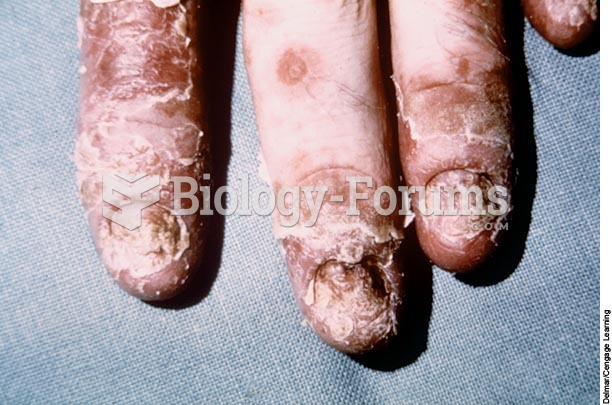Answer to Question 1
Crohn's disease is approximately equal in frequency among males and females. Ethnic and geographic distribution is widespread but there is evidence that it is more frequent among Jews.1 The cause is not clear. One thought is that the repeated impact of emotional stress may give rise to dysfunction of the small intestine, with subsequent structural changes.1 There appears to be a high family incidence.2
The disease usually begins in the teens or twenties with over 10 percent appearing before age 15; 50 percent beginning in the third decade; and over 90 percent before age 40 . Symptoms include a vague, cramping abdominal pain that may be localized to the perium-bilical area or to the right lower quadrant, depending on what part of the intestines is affected. It often occurs one or two hours after meals, may be preceded by audible bowel sound (borborygmi), and is relieved by defecation or vomiting.
Because of anorexia, nausea, or the fear of abdominal cramps, intake is decreased. The aims of therapy should be to suppress active inflammatory disease, conserve the small bowel with medical treatment, and reserve surgery for the complications of fistulae and abscess. Adreno-cortical steroids alone or in combination with antibiotics produce symptomatic improvement in the majority of patients treated during the first few years of their disease. Initially, Crohn's has been treated with prednisone, 40 to 60 mg per day and sulfasalazine, 3 to 4 g p.o. per day if there is no clear evidence of an abscess. Today there are other approaches that are being used. A drug called Remicade is being used to treat Crohn's disease. It induces and maintains remission of moderate to severe clinical Crohn's disease unresponsive to conventional therapy. A second drug, mercaptopurine (commonly called 6-MP), was originally intended to be used to treat certain forms of leukemia, but it also affects the immune system so that in some conditions where the immune system is overly active, such as Crohn's disease, it is being used, believed by some to be the most potent drug for Crohn's disease.
If there are deep fissures in involved bowel, antibiotics such as tetracycline are added.3 Surgery is employed for the complications of Crohn's disease in the fibrotic stage for: (1) obstruction, (2) abscess, and (3) fistula.4
Answer to Question 2
Cushing's syndrome.







